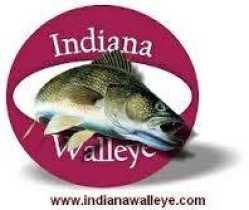Cagle's Mill Lake, Jaycee Park pond among those stocked by DNR
When it comes to stocking fish in Indiana waters, 2014 was quite a banner year.
The DNR and organizations with a DNR permit stocked 31.9 million fish in 70 counties, including Putnam, in 2014.

In a typical year, DNR stocking numbers have been between 22 million and 24 million fish, officials report.
The increase for 2014 was primarily due to a near-record number of walleye eggs collected at Brookville Lake by DNR biologists for hatchery production, the Division of Fish and Wildlife Fisheries reported.
Those eggs also had a higher-than-normal survival rate. As a result, biologists stocked approximately 10 million more walleye fry than normal for the year.
Cagle's Mill Lake in Putnam and Owen counties was one beneficiary of that 2014 stocking process.
Local anglers will be happy to learn that 79,800 walleyes were added to the waters of Cagle's Mill Lake. Of course, it might be a year or two before they put up much of a rod-bending battle. The average size of those walleyes introduced to Cagle's Mill waters was 1.5 inches.
Other species stocked throughout Indiana were bluegill, brown trout, crappie, channel catfish, chinook salmon, coho salmon, grass carp, hybrid striped bass, hybrid sunfish, largemouth bass, muskie, pike, rainbow trout, redear sunfish, saugeye, steelhead, striped bass and yellow perch.
Stocking fish size ranged from mere fry to channel catfish and muskies more than a foot long.
Among the beneficiaries of channel catfish stocking, the DNR reported, was the lake at Jaycee Park in Greencastle. It was stocked with 350 channel cats, averaging 9.3 inches when introduced to the pond in 2014.
Meanwhile, Raccoon Creek saw 705 rainbow trout, the average size of which was 11 inches, added to those Parke County waters. At nearby Rockville Lake, 1,670 channel catfish were introduced. Those cats average 8.7 inches.
Stockings supplement natural reproduction or help establish a species in an area where it cannot reproduce on its own, DNR officials explained.
"Fish stockings not only add value to the fishery but also give a boost to the local economy by bringing additional anglers to the area," DNR Division of Fish and Wildlife Fisheries Chief Brian Schoenung said.
District fisheries biologists evaluate fish populations to determine the best sites for stocking. A list of locations stocked in 2014 can be found at http://www.in.gov/dnr/fishwild/5457.htm.
The fish stocked by DNR are produced at the state's seven hatcheries and one trout rearing station. It is illegal to stock public waters without a DNR permit.
Fish were raised and stocked with the help of anglers through fishing license sales and the Sport Fish Restoration Fund, which collects excise tax paid by the manufacturer on qualifying fishing equipment.
